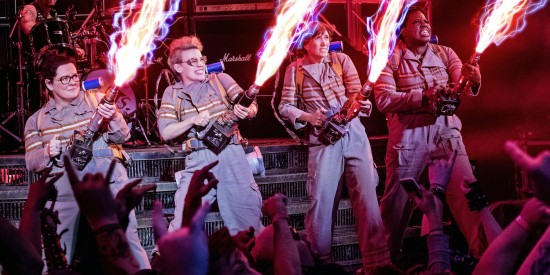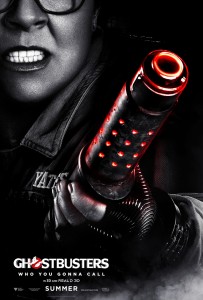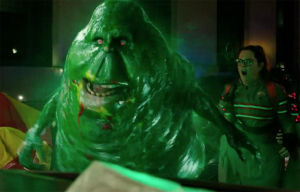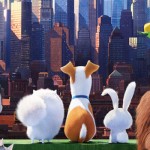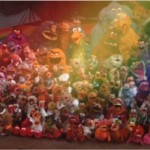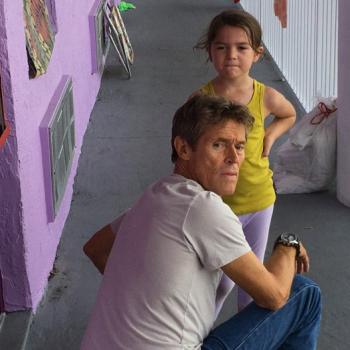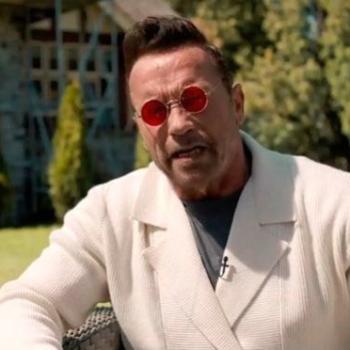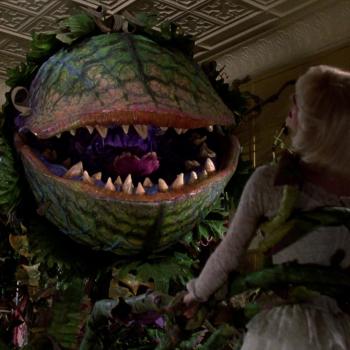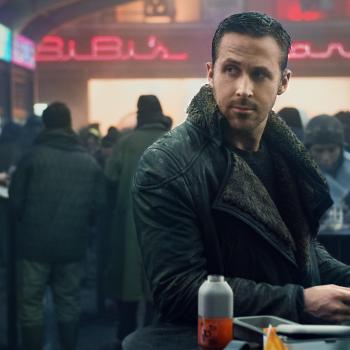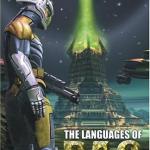“Ghostbusters” is what happens when originality clashes with lucrative intellectual property.
Truthfully, Paul Feig’s remake of Ivan Reitman’s beloved 1984 comedy is about as good as you could hope for. In its best moments, the cast makes you forget about the original and accept this new version as its own funny, weird thing. But those moments are too often undercut by awkward references to the first film, as if it’s haunted by the specter of Peter Venkman.
Feig veers from the trend of doing a belated sequel and makes his “Ghostbusters” a traditional remake. Kristen Wiig plays Erin, a respected professor at Columbia University who learns that a book she co-authored years ago with fellow researcher Abby (Melissa McCarthy) about the existence of ghosts has resurfaced. Fearing that the book will derail her tenure hopes, Erin tracks down Abby and asks her to quash the book. But it’s not long before the duo, along with Abby’s bizarre work partner Holtzman (Kate McKinnon), encounters a ghost up close and gets into the ghoul-busting business. Along with Patty (Leslie Jones), an MTA worker with a deep knowledge of New York history, and Kevin (Chris Hemsworth), their adorably dumb receptionist, they team up to stop a pasty-faced janitor (Neil Casey) from unleashing a spiritual apocalypse on New York.
Feig chose to do a remake rather than a “legacyquel” because he said he wanted the opportunity to start fresh and make something original. In the big strokes, he succeeds. He doesn’t make Erin, Abby, Holtzman and Patty female copies of the original gang (although for a film so progressive, it’s disappointing that the African American ghostbuster is once again the only one who’s not a scientist). Rather than continue the first film’s riff on blue-collar entrepreneurs going up against government bureaucracy, he tells a story about underdogs and believers in the face of a skeptical public. It’s not groundbreaking, but it’s different enough to lead to new comedic possibilities and scenarios.
There’s been a lot written about the Internet fanboys afraid of having their childhoods ruined because of female ghostbusters, and that’s just idiotic. What Feig is doing is no different than what Reitman (an executive producer here) did in 1984 when he assembled a troupe of the funniest actors around. Like Aykroyd, Bill Murray and Harold Ramis, three of the new recruits (Wiig, McKinnon and Jones) honed their skills on late-night sketch TV. And Feig’s work with McCarthy in “Bridesmaids,” “The Heat” and “Spy” have proven that tropes previously thought of as “guy stuff” could be just as good, and possibly improved, with a bit of estrogen.
As the group’s true believer Abby, McCarthy plays more of a straight character this time out, only getting a chance to unleash her skill for physical comedy and scathing sarcasm in a few scenes (a running feud with a Chinese delivery man is particularly funny). Her and Wiig are the film’s emotional center, giving it a heart the original lacked. The two worked well together in “Bridesmaids,” and have a fun chemistry. Jones doesn’t stray too far from the tough-talking, loud characters she plays on “Saturday Night Live,” so I’m assuming mileage on her will vary (I think she’s one of the best things on the show right now, so I enjoyed her). McKinnon will be a revelation for many in her first big-screen role. Holtzman is a nutty human cartoon, bringing the nerdiness of Egon and mixing in a dash of Harpo Marx. She goes big with the role, always flitting in to the side of the frame with a wink and weird smile, raving about her new inventions and bringing a lively charge to the proceedings. She easily walks away with the film.
Well, almost. Between this and last year’s ill-begotten “Vacation,” Chris Hemsworth seems to be attempting to enter comedy via remake, and he’s very funny as Kevin, the Ghostbusters’ blockhead receptionist, kept on only because he’s made of “pure muscle and baby-soft skin.” Hemsworth has a ball playing happily stupid, and gets some of the film’s biggest laugh. There are also some funny digs at the internet controversy surrounding the film, such as when the girls read some Youtube comments.
The original “Ghostbusters” navigated a tricky tone, mixing in deadpan humor with its supernatural creepiness. Feig’s world is decidedly more outlandish. It’s not a film of people playing straight in the face of craziness; here, everyone is amped up and silly. Sometimes that’s funny; there’s an amusing scene at the beginning involving Abby being fired by her dean. Other times, it just makes the film too frantic. Cecily Strong is a funny woman, and one of the highlights of recent “SNL” seasons, but her work as the assistant to Andy Garcia’s mayor is a bit too broad and hammy to work. There’s also a scene where the Ghostbusters encounter a spook at a heavy metal concert that’s a lot of fun until a certain rock-star cameo pushes it a bit too far.
The film finds some new things to do with the ghosts, and much of it is a lot of fun. I like the look Feig turns to for his specters. They’re a pulsating blue or green, almost glowing off the screen, and I loved the way the colors pop, especially during an otherworldly invasion of Times Square. The cast has a good time playing with the new toys, particularly a giant glove that allows them to sock supernatural baddies and a device that shreds souls into billions of pieces, like an otherworldly device from “Fargo.” Aside from a few deliberate moments, very little of the action sequences are too derivative of the original film, and the actors find funny beats to play in many of them. Feig began upping his visual game in last year’s “Spy” and this is his most pleasant-to-look at film yet.
But whenever the film starts to hit its groove, Feig and co-writer Katie Dippold toss in a wink to the first film that reminds you you’ve seen this all done better before. The movie isn’t so much full of Easter eggs as it is a giant egg salad, with lines of dialogue lifted verbatim, shots pulled straight from the first film and little nudges to the ribs. I appreciate those to an extent, and there are some clever callbacks (a sign on Abby’s office doors is a treat for eagle-eyed fans). But when the film keeps tossing in slimers, marshmallow men and musical winks, it hampers the film’s originality. The best thing that this film could have done was be its own thing without relying on the first movie. And while Feig and his cast do that where it matters — again, the characters are wonderful — it defeats their cause when they keep calling back to the original movie’s firehouse, library ghost and obsession with old buildings. Compounding the problem are cameos by nearly every member of the original cast (playing different roles), most of which feel bloated and out of place. There shouldn’t be a universe where Bill Murray is the worst thing in a Ghostbusters movie, but his appearance here is painful. Although I suppose it is fitting that the two cameos that do work involve the original film’s ladies, Annie Potts and Sigourney Weaver.
Part of me wonders if Feig and Dippold’s original script was free of most of these callbacks, and if Sony mandated throwing in Mr. Stay Puft, Slimer and some other winks. I understand not wanting to leave any IP on the table, I guess, but the constant use of callbacks is a crutch that suffocates the fun, original work going on. There’s a big part of me that wants to see a sequel simply so I can see what happens when these actors are allowed to play with the idea without being so beholden to the first film (although the post-credits sequence hints that that might not be the case anyway).
The film is largely enjoyable and often very funny, despite these hiccups. Feig’s cast is strong and there’s a lot of joy found in just watching them banter and bust ghosts. But the movie stumbles when the plot takes over. Neil Casey might look suitably creepy here as Rowan, the young nerd who wants to bring about the apocalypse, but he never feels like a foreboding or funny presence. He’s just a pasty plot device. And while there are some fun ideas in the film’s climax — such as the Ghostbusters doing battle with the souls of puritans, revolutionary soldiers and possessed parade balloons — the CG limits the cast’s ability to be loose and funny, which is where Feig’s films usually shine. After awhile, it’s just a pretty-looking mess, up until a final showdown with — I’m not making this up — a giant version of the Ghostbusters logo that just completely falls apart. Also, the film gets dangerously close to having Chris Hemsworth lead a choreographed dance number, but thankfully that’s saved for the end credits.
“Ghostbusters” was always going to be a nearly impossible film to remake, so it’s no surprise that the film lurches when it tries to recapture the original. Special effects and comedies rarely go well together, and the film can’t quite balance its very funny humor with its very loud action. But before it collapses under the weight of its slime, it’s a very funny character comedy with four highly capable leads, and there’s a lot to like, particularly in the first half. Considering that there are more laughs in one half hour here than in the entirety of “Ghostbusters 2,” I’d say Feig probably did better than anyone else could at resurrecting this material. But maybe call an exorcist and purge it of the spirit of 1984 before doing a sequel.

